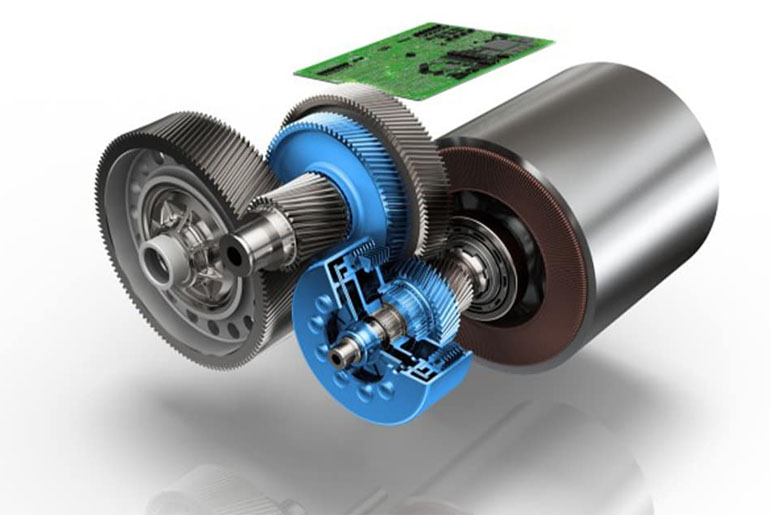The transition from internal combustion engine (ICE) vehicles to electric vehicles (EVs) represents a significant shift in automotive technology. One of the key areas of difference lies in the powertrain, particularly in how traditional transmissions compare to the simpler, more efficient systems used in EVs. Understanding these differences is essential to grasp the technological advancements that make EVs not only more environmentally friendly but also more efficient and reliable in many respects.
The Complexity of Traditional Transmissions
In ICE vehicles, the transmission system plays a critical role in transferring power from the engine to the wheels. This process is inherently complex due to the nature of internal combustion engines, which produce power in a narrow range of engine speeds (RPM). To maintain optimal performance across various driving conditions, a transmission with multiple gears is required.
- Multi-Gear System: Traditional transmissions typically use a series of gears to adjust the engine’s power output to the wheels. The gears allow the vehicle to accelerate smoothly and efficiently from a stop and to maintain different speeds.
- Automatic vs. Manual: Transmissions can be either manual, where the driver manually shifts gears, or automatic, where the transmission automatically selects the appropriate gear based on speed and throttle input. Some modern vehicles also use continuously variable transmissions (CVTs), which provide an infinite range of gear ratios.
- Complexity and Maintenance: The complexity of these systems means that they require regular maintenance and are prone to wear and tear. The moving parts, including gears, clutches, and hydraulic systems, are subject to high stresses and need periodic inspection, fluid changes, and sometimes repairs or replacements.
The Simplicity of EV Powertrains
In contrast to ICE vehicles, EVs use electric motors, which have a fundamentally different power delivery characteristic. Electric motors provide maximum torque instantly and over a broad range of speeds, eliminating the need for multi-gear transmissions.
- Single-Speed Gearbox: Most EVs use a single-speed reduction gearbox that directly connects the motor to the wheels. This setup takes advantage of the electric motor’s ability to operate efficiently across a wide range of speeds without the need for multiple gears.
- Instant Torque and Smooth Power Delivery: One of the most notable features of an electric powertrain is its ability to deliver instant torque. This results in rapid acceleration and a smooth driving experience without the lag or gear shifts associated with traditional transmissions.
- Lower Maintenance: EV powertrains are mechanically simpler, with fewer moving parts. This simplicity leads to lower maintenance requirements and generally greater reliability. Without the need for complex gearboxes, clutches, or transmission fluids, the wear and tear on the system are significantly reduced.
Efficiency and Performance
- **Energy Efficiency**: Electric motors are far more efficient than internal combustion engines. ICEs typically convert only about 20-30% of the energy in gasoline into useful power, with the rest lost as heat. In contrast, electric motors can achieve efficiencies of 85-90%, making EV powertrains more energy-efficient overall. The absence of multi-gear transmissions also means less energy is lost in the process of transferring power to the wheels.
- Performance Characteristics: The performance characteristics of EVs differ significantly from traditional vehicles. The instant torque provided by electric motors enables quicker acceleration, often outperforming comparably powered ICE vehicles. Additionally, the linear power delivery and lack of gear shifts contribute to a smoother, more responsive driving experience.
- Regenerative Braking: A key feature of EV powertrains is regenerative braking, where the electric motor acts as a generator when the vehicle slows down, converting kinetic energy back into electrical energy and storing it in the battery. This feature not only improves energy efficiency but also reduces wear on the braking system.
Driving Experience
- Smoothness and Quiet Operation: The absence of gear shifts in an EV means that acceleration is continuous and smooth, without the interruptions or hesitations typical of gear changes in traditional vehicles. Furthermore, electric motors operate much more quietly than internal combustion engines, leading to a quieter driving experience.
- Simplified Driving: With no need for gear selection, driving an EV is often more straightforward, especially for those accustomed to automatic transmissions. The vehicle’s software handles power distribution efficiently, requiring less input from the driver to maintain optimal performance.
- Customization of Driving Modes: Many EVs offer customizable driving modes that adjust the powertrain’s characteristics, such as altering the aggressiveness of regenerative braking or the throttle response. This allows drivers to tailor the driving experience to their preferences, something that is less common in traditional vehicles.
Environmental Impact
- Emissions: EV powertrains produce zero tailpipe emissions, a significant advantage over traditional vehicles. Even when accounting for the emissions associated with electricity generation, EVs tend to have a lower overall carbon footprint compared to ICE vehicles.
- Sustainability: The simpler design of EV powertrains not only reduces the need for maintenance but also contributes to a reduction in the use of fluids and other consumables, which can have environmental benefits over the vehicle’s lifespan.
Conclusion
The comparison between traditional transmissions and EV powertrains highlights the technological advancements that make electric vehicles more efficient, reliable, and environmentally friendly. While traditional transmissions are complex systems that manage the narrow power band of internal combustion engines, EV powertrains leverage the broad torque range and efficiency of electric motors to provide a simpler, smoother, and more efficient driving experience. As the automotive industry continues to evolve, the benefits of EV powertrains are likely to drive further adoption, paving the way for a cleaner, more sustainable future in transportation.

